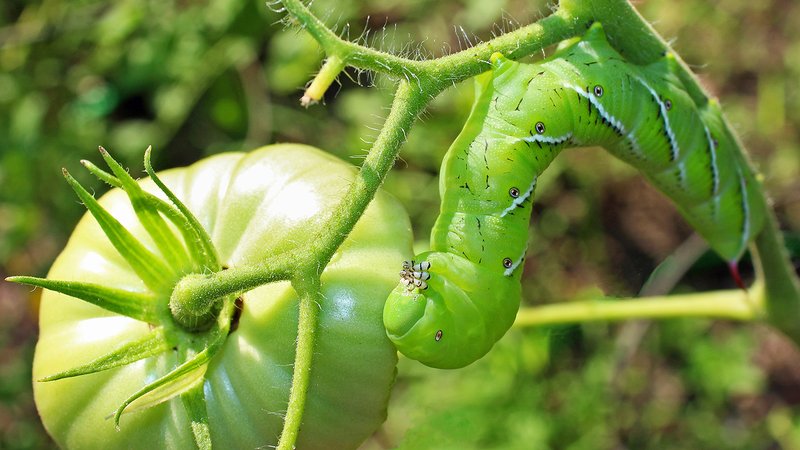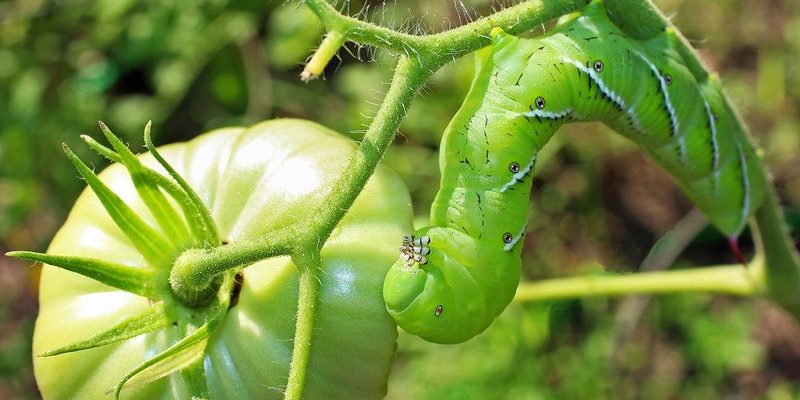
So, what does it all mean for you? Managing a hydroponic tomato system can feel like a balancing act, and throwing hornworms into the mix can complicate things. But don’t worry! Whether you’re a seasoned gardener or just starting out, understanding these pests and how to deal with them in your hydroponic set-up can make your tomato-growing journey smoother.
What Are Hornworms?
Hornworms are the larval stage of certain moths, specifically the Tomato Hornworm, and they can be like little green ninjas in your garden. These caterpillars are usually about 3 to 4 inches long and can be hard to spot at first because they blend in quite well with the leaves. They have a distinct horn-like protrusion on their rear ends, which is where they get their name.
You might be wondering, “Why should I care about hornworms?” Well, they can munch through your tomato plants at an alarming rate. In just a single day, a few of these little guys can decimate a healthy plant. Picture this: You come back to your hydroponic setup, and instead of lush green leaves, you see stripped branches. Frustrating, right?
These caterpillars primarily feed on the leaves and sometimes even the fruit of tomato plants. While they’re still in their larval stage, they can consume a lot. Luckily, they don’t have a long life cycle, but the damage they can do in a short time is significant.
Identifying Hornworm Damage
If your tomatoes are looking a bit under the weather, hornworms might be the culprit. One of the first signs of their presence is the *chewed leaves*.
Here are a few things to look for:
- Leaf Damage: Look for large holes in the leaves. Hornworms tend to eat the entire leaf, leaving only the stem.
- Frass: This is a fancy word for caterpillar poop. If you see tiny green droppings beneath your plants, it’s a telltale sign of hornworms nearby.
- Discoloration: Plants that are infested may show signs of yellowing or wilting due to stress.
- Finding the Worms: If you spot them, they usually hang out on the undersides of the leaves. Just look for their green, camouflaged bodies.
Once you identify the damage, you can take action. You don’t want to lose your whole crop because of a few hungry caterpillars!
Preventing Hornworms in Hydroponic Systems
Prevention is often the best medicine. When it comes to protecting your hydroponic tomatoes, there are several strategies you can implement.
First, *monitor your plants regularly*. Check for signs of hornworm activity, like the damage mentioned earlier. The sooner you catch them, the easier it will be to manage.
Next, consider integrating beneficial insects into your hydroponic setup. For example, *ladybugs* and *parasitic wasps* can help keep hornworm populations in check. They won’t completely eliminate the risk, but they certainly can help maintain balance.
Additionally, maintaining a healthy environment for your tomato plants can bolster their defenses. Make sure your hydroponic system is stable in terms of pH levels and nutrient balance. Strong plants are naturally more resistant to pests.
Lastly, think about *crop rotation*. Even in hydroponics, changing up your plants can disrupt the life cycle of pests like hornworms because they won’t have a steady food source.
How to Manage a Hornworm Infestation
If you’ve spotted hornworms munching on your tomatoes, don’t panic. Here’s a straightforward approach to managing the infestation:
1. **Hand-Picking**: Seriously, this sounds tedious, but hand-picking hornworms off your plants is an effective method. Just wear some gloves and get to work. They’re usually easy to see, given their size.
2. **Insecticidal Soaps**: If hand-picking feels like too much, consider using insecticidal soap. It’s a natural option that targets soft-bodied insects like hornworms without being harmful to your plants. Just make sure it’s safe for use in hydroponic systems.
3. **Neem Oil**: Another great natural remedy is neem oil. This product disrupts the hornworms’ feeding and reproductive cycles. Just mix it according to the instructions and spray it on your plants.
4. **Encourage Predators**: As mentioned before, attracting beneficial insects to your setup can help maintain a balanced ecosystem. Sometimes, it’s better to let nature do its thing!
Why Hydroponics Is Ideal for Tomatoes
Now that we’ve tackled those pesky hornworms, let’s talk about why hydroponics is a fantastic choice for growing tomatoes in the first place.
Hydroponics allows you to control the growing environment much more than traditional soil gardening. You can manage light, temperature, and nutrient levels precisely.
This consistency leads to faster growth rates and typically better yields than soil-grown tomatoes. Plus, *no-soil* means fewer pests like **fungus gnats** and soil-borne diseases that often plague traditional gardens.
Another bonus? You can set up your hydroponic system indoors or on a balcony. If you have limited space or poor soil conditions, hydroponics can be a game-changer.
Final Thoughts on Hornworms and Hydroponic Tomatoes
Growing tomatoes in a hydroponic system can be incredibly rewarding, but those sneaky hornworms can pose a real threat to your efforts. By being vigilant and proactive, you can manage them effectively.
Understanding these pests is key to maintaining a healthy crop. Remember to keep an eye out for damage, implement preventive measures, and act quickly if you see a hornworm. With a little patience and care, you can enjoy a bountiful harvest of delicious tomatoes, free from unwanted munchers.
So, what do you say? Ready to take on the challenge of growing hydroponic tomatoes while keeping those hornworms at bay? You’ve got this!

